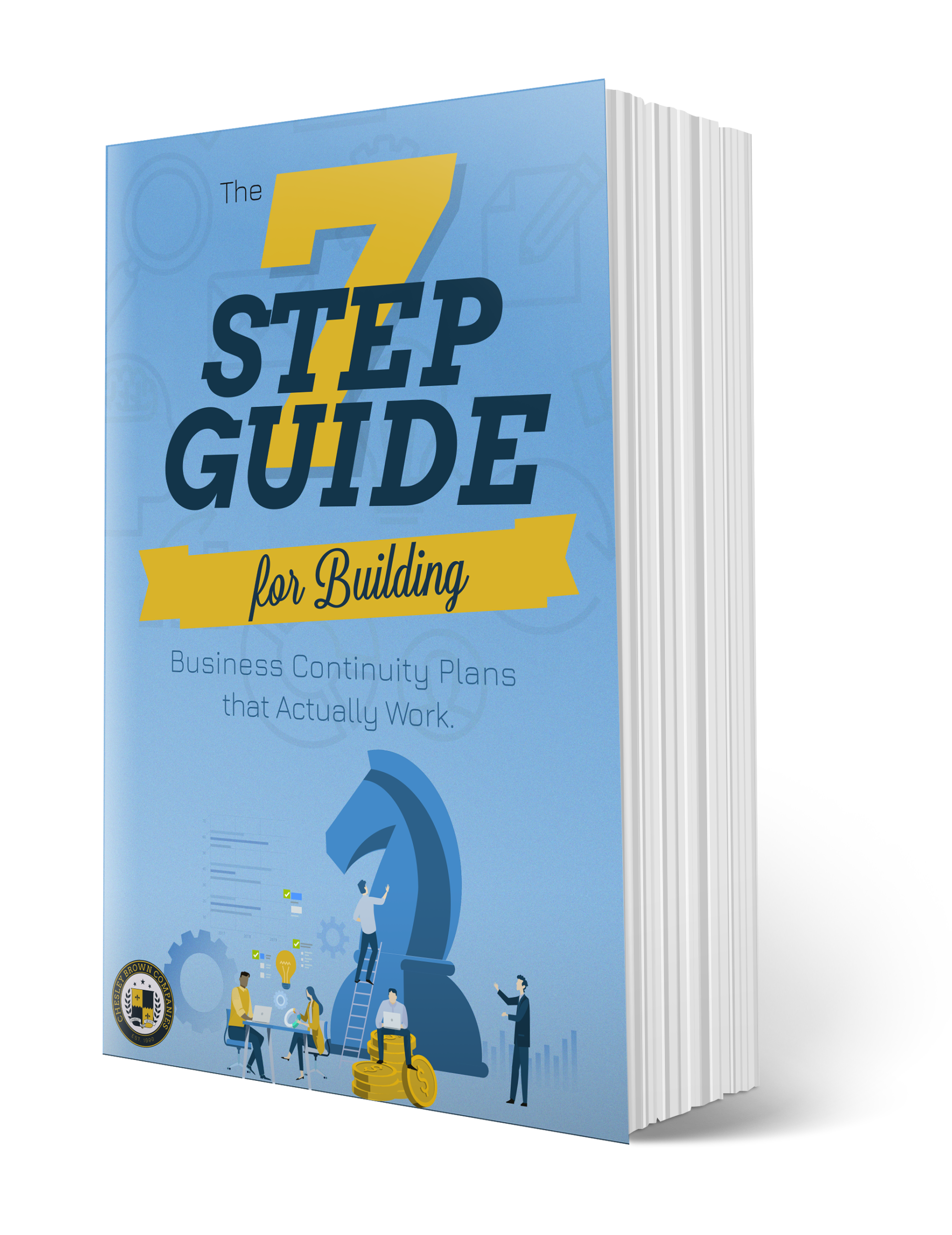4 Guaranteed Ways to Prepare Your Business
The 2020 presidential election is approaching and the possibility of election day civil unrest is very real, according to the FBI, the National Security Counsel, and Homeland Security. But how can you protect your business in the event of a disturbance during or after the election? Planning for civil unrest is will ensure business continuity should your area, or business be affected.
Let’s begin with a story.
It was an ordinary day. John, an overnight shift worker in Pittsburgh was on the way to his job. As he rounded the corner, he was confronted by a deluge of people shouting and waving signs. Before he could drive away, his car was surrounded by angry protestors. They pounded on his windows and rocked his car. John was stuck.
He attempted to make a call, letting his supervisor know what was happening. But to no avail—communication channels were down. John eventually abandoned his car and returned home, as he had no way of getting through and reaching his workplace.
Civil unrest is a reality in this country. In particular, during major national events such as the upcoming presidential election, its likelihood increases substantially. The disruptions that result can impact travel, communication, and threaten safety. For business leaders, they can interfere with staffing and workplace continuity.
Luckily, with the proper planning and knowledge, you can protect your business against the consequences of civil unrest.
Planning for election day civil unrest starts with ensuring the safety and security of all people on your property. With that in mind, I’ll begin by discussing a strategy to put a robust process in place to protect against the potential impact of civil unrest.
1. Design a playbook
First, arrange a brainstorming session with your leadership team and security officers. During this meeting, identify the most pressing threats to your business. With the threats you’ve identified in mind, relate them to the following factors:
- Structural integrity – Is your business front susceptible to property damage? Consider physical measures, including barricades and flame retardant window and door coverings. Plan to put these measures into place. Maintain a list of contractors able to implement these measures quickly and effectively.
- Communication protocol – Designate a communication protocol. In the event of a business disruption, you must clearly define the preferred way to communicate. This includes the chain of command (who) and medium (what): Who do you call first? Who does that person contact, and so on? Do you make a phone call or communicate through a chat service?
- Designate a safe room – In the event of building intruders, designate a safe room in a secure area of your building. Design a plan to move building employees, personnel, and customers here should a safety crisis occur. Finally, maintain a secure line of communication within the safe room—it’s essential that you can reach outside parties, including local law enforcement and first responders.
- Security intelligence – Coordinate with security experts to survey the threat landscape. Consider information such as historical trends in property destruction and local crime statistics. Areas that have experienced disruptions in the past are likely to be impacted in the future.
- Access privileges – In the event of a disruption, determine who will have access to the property. Consider who is allowed in and out of the building and clearly define the necessary credentials. What are the safest ways in and out of the building and can your building be locked down? Not all buildings can, so it’s essential to find out and prepare in the event of a disruption.
- Identify threats – Not all businesses are equal. It’s essential to identify the threats most relevant to your business. Create a plan tailored to your needs. For instance, create a plan to transition to remote work should your property(s) be compromised. Given the uncertainty surrounding the upcoming election, prepare for an extended disruption due to prolonged litigation.
- Abstain from political statements – Position your business as a politically neutral entity. This prevents your organization from becoming a target for ideologically-driven groups.
- Keep the supply chain open – The Covid-19 pandemic has taught us that supply chains are vulnerable. Ensure business continuity by partnering and planning with suppliers. Plan for law enforcement shortages and considering hiring a private security team.
After you’ve addressed the concerns listed above, you will have a better understanding of the threats facing your business and how to prepare for them. The next step is to assemble a team.
Let me explain.
2. Build a crisis response team
Once you’ve created a playbook, it’s time to assign roles. Meet with all concerned parties. Include executives, managers, and security officers. Consider each team member’s expertise and how their skills can be applied to implement playbook strategies. For instance, an IT expert handles communication strategies while a PR manager controls company messaging.
Consider hiring outside consultants. Include security experts and contractors to assist with tasks requiring specialized knowledge. For example, optimizing entrance and exit strategies and building and placing physical barriers.
Once you’ve created your team, it’s time to put your plan in writing.
Let’s find out how.
3. Define your process
It’s not enough to have a plan for election day civil unrest. You need a list of easily accessible steps to follow should a crisis occur.
Checklists outline a process in small, easily digestible steps, removing the burden from human memory. In the midst of a crisis, it’s best to minimize the risk of human error. Checklists are a great way to do so.
Create the following checklists to maximize preparation while minimizing human error:
- Pre-crisis checklist – What do you need to do to prepare for a disturbance resulting from civil unrest? Include the factors identified in step 1.
- Crisis checklist – How will you evacuate employees should a disturbance happen? This checklist will optimize efficiency in the midst of a crisis. Be sure that this list is distributed throughout your organization. It’s essential that everyone is on the same page and follows the same set of procedures during an emergency.
- Post-crisis checklist – Compose a list of steps to follow after a disturbance. Include an assessment of physical and financial damages. Anticipate damages and keep contact with outside parties to assist with asset recovery.
Having these checklists in place will optimize planning and recovery should civil unrest disrupt your organization. The final step is to practice.
Let’s explore this strategy.
4. Train your team
You’ve identified the risks to your business and addressed the risk mitigating factors. You’ve put together a team and created checklists to plan for each stage of a crisis. Now it’s time to put your team’s feet to the floor.
Run a series of drills to build team confidence, efficiency, and effectiveness. Well-orchestrated training will help to automate the crisis response process in the event of a disruption. Additionally, it will highlight established roles and responsibilities, and bring your team together.
Conclusion
John’s team didn’t have a plan for civil unrest. As a result, he missed his shift and was confronted with fear and uncertainty. Had his team followed the steps outlined above, he would have been aware of the protest and prepared with a plan B.
At Chesley Brown, we are optimistic that the election process will be peaceful and productive. Yet, this election cycle has been contentious. With concerns about voter integrity and the peaceful transfer of power, the potential for election day civil unrest is real.
We understand that planning for the unforeseen can be an overwhelming process. That’s why we’ve built a framework that enables businesses to anticipate and navigate risk before it becomes a crisis. We are here to manage risk so you don’t have to.
Sign up!
For industry-leading guides and analysis sign up for our blog below.
Latest News
Podcast | Risk Takers Series #3 Surveillance Detection Routes (SDR)
Have you ever had a gut feeling you were being followed? You might not be so crazy after all. It’s a frightening thought. You’ve spent years building your business, but all it takes is one…
Read MoreHow to Prepare for Economic Risk
Best Strategies for Building Resiliency How to position your business for uncertainty If there is one aspect of business that is certain, it’s uncertainty. It might also be the understatement of the year to say…
Read Morerisk-takers #2 Terry Fisher — Electronic Countermeasures
Have you ever stopped to ask yourself what it is about your business that is truly valuable? When you really think about it, any business with a product or service has something a competitor or adversary could use. And if you’re being honest, you probably haven’t fully considered all the ways they might get their hands on that information. You’ve spent years building your business, but all it takes is one bad day to compromise that dream. In this week’s episode Brent sits down with FBI Special Agent (Ret.) and engineer Terry Fisher to discuss corporate espionage, electronic countermeasures (sweeps), bugging, and the common methods bad actors have used throughout history to gain access to proprietary information.
Read MorePodcast | Risk Takers Series #2 Terry Fisher — Electronic Countermeasures
Have you ever stopped to ask yourself what it is about your business that is truly valuable? When you really think about it, any business with a product or service has something a competitor or…
Read MoreThe Risk Takers Podcast Series Launches Today!
Chesley Brown Launches the Risk Takers Podcast Series Security Risk Management experts Chesley Brown Companies today announced the launch of “The Risk Takers Podcast Series” — a highly bingeable podcast hosted by veteran risk management…
Read More






